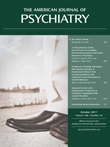Preventing Pain Medication Dependence
To the Editor: In the May 2011 issue of the Journal, Carrie L. Dodrill et al. (1) cited epidemiological evidence that there are approximately 9,000 incident cases of prescription opioid abuse every day in the United States. This statistic cogently frames their discussion and the public health problems that surround this emerging epidemic. But if the authors are correct that there is minimal risk of developing opioid dependence in persons who have no history of substance abuse, 0.2% by the estimate provided, only 18 of the 9,000 new cases of opioid abuse would be individuals with no history of substance abuse. This would imply that it is unnecessary to assess any prognostic indicators other than the patient's substance abuse history. However, the authors' estimate seems implausibly low.
There is no denying the growing epidemic of prescription opioid use. There has been a fivefold increase in chronic prescription opioid use in the United States over the past decade. Opioid overdose is now the second leading cause of accidental death in the United States, and it is the leading cause in 15 states and the District of Columbia, where it even exceeds deaths due to motor vehicle accidents (2). With use expected to double again in the next 3–4 years, the epidemic is so severe that news commentators are calling it “Pharmageddon.” This might suggest that substance abuse is more prevalent than previously thought, that persons with other substance abuse histories are flocking to prescription opioids, or that the risk of addiction in opiate-naive individuals is much higher than Dodrill et al. suggest.
Responses to this crisis should include the development of early detection algorithms and early intervention strategies, as the authors recommend. To stem the epidemic, it may also be necessary to limit opioid use wherever possible to short-term treatment of severe pain syndromes and to require routine monitoring of treated patients. In our experience, witnessed urine drug screens are much more accurate than unwitnessed screens as measures of substance misuse and treatment compliance. To focus our efforts exclusively on the detection of extant substance abuse misses what in emergency medicine is termed the “golden hour”: the brief interval that follows traumatic injury during which there is the highest likelihood of lifesaving intervention. In terms of preventing opioid abuse, the golden hour extends from the point when the initial prescription is considered to the point when the patient leaves the pharmacy with the medication in hand. This is the optimal interval for risk-benefit discussions and requires no complex detection algorithm. To our knowledge, there have been no systematic studies aimed at preventing the development of opioid abuse in any population. Such studies are urgently needed.
1. : Prescription pain medication dependence. Am J Psychiatry 2011; 168:466–471Link, Google Scholar
2.



